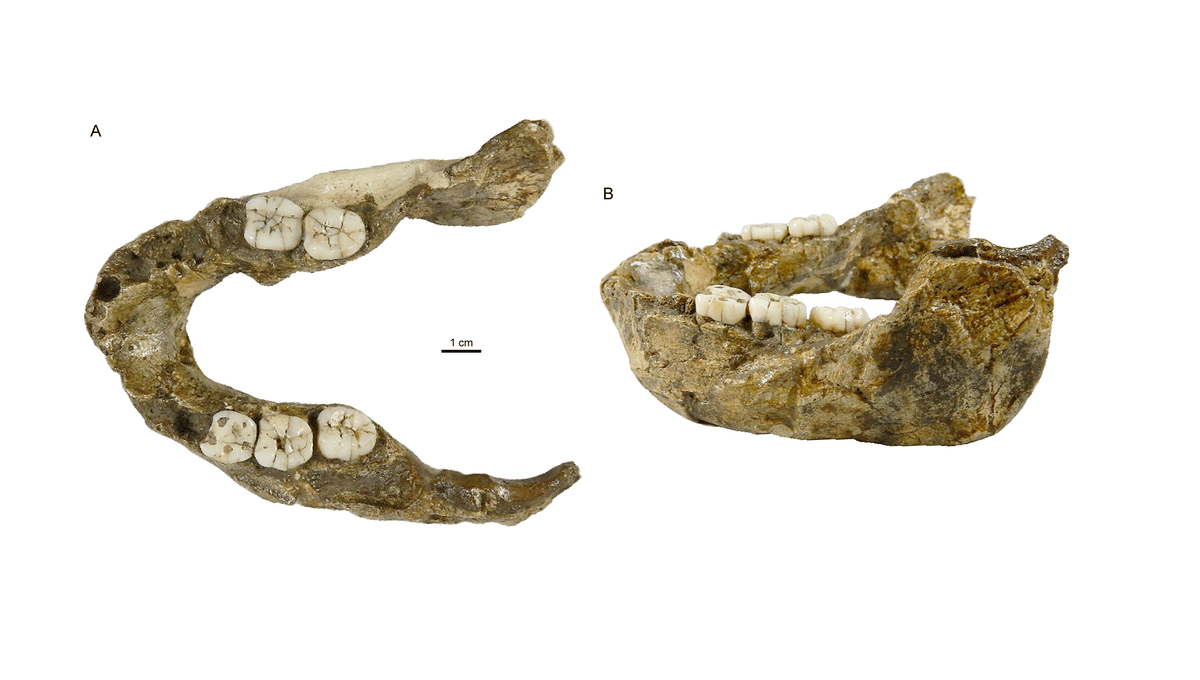
The hominin family tree may have a new twig: Paranthropus capensis, a “gorilla-like” human relative that lived in southern Africa some 1.4 million years ago. A new study focuses on a hominin jawbone known as SK 15 that was unearthed in 1949 at Swartkrans, a cave in modern-day South Africa that holds a rich trove of prehistoric hominin fossils, including those of early Homo species.
ADVERTISEMENT GO AD FREE
In the decades after it was discovered, scientists debated the identity of SK 15, attributing it to various species – including Homo erectus, a fire-wielding archaic species that thrived for an impressive two million years (for comparison, our species has only existed for roughly 300,000 years). Adding another twist to the tale, SK 15 was later proposed to share similarities with Homo naledi, the tiny-brained species that remain surrounded by controversy.
Now, a team of researchers has put forward another theory. The shape of the mandible, plus some of the dental features, differ significantly from H. erectus and, they argue, aligns more closely with Paranthropus. As such, they argue the remains represent a previously unrecognized species, which they call P. capensis – not to be confused with another P. capensis, the rock hyrax (Procavia capensis)
Paranthropus is a genus of extinct hominin that scientists have previously split up into the species P. robustus, P. boisei, and P. aethiopicus.
Think of them as old, distant cousins of Homo sapiens – a mash-up of modern humans and the other great apes, with an added hint of something unknown.
We did not directly evolve from them, coming from different branches of the family tree, although we share some of the same distant relatives. Paranthropus was a side branch that eventually plunged into extinction, while our ancestors continued evolving much later, and eventually gave rise to modern humans like you and me.
ADVERTISEMENT GO AD FREE
This archaic quality of the Paranthropus can be seen in their features: They are a robust bunch of hominins with relatively small brains compared to their contemporaries H. erectus.
Paranthropus are sometimes described as having “gorilla-like” features because their skull structure crests suggest they had powerful, grinding herbivorous teeth like other living great ape cousins. One of the most important discoveries of the genus was a skull discovered in Tanzania in 1959, which researchers described as a “Nutcracker Man” because of its powerful jaws and large teeth.
Although we can only learn so much from a single jawbone, the researchers believe the mysterious mandible of SK 15 is more akin to the nut-cracking Paranthropus, rather than the more refined jaws of Homo species. Nevertheless, it contains features never seen before, hinting that the bone may represent a previously unknown species yet to be identified by scientists.
The new study is published in the Journal of Human Evolution.
Source Link: This 1.4 Million-Year-Old Jawbone May Reveal A New "Gorilla-Like" Human Relative